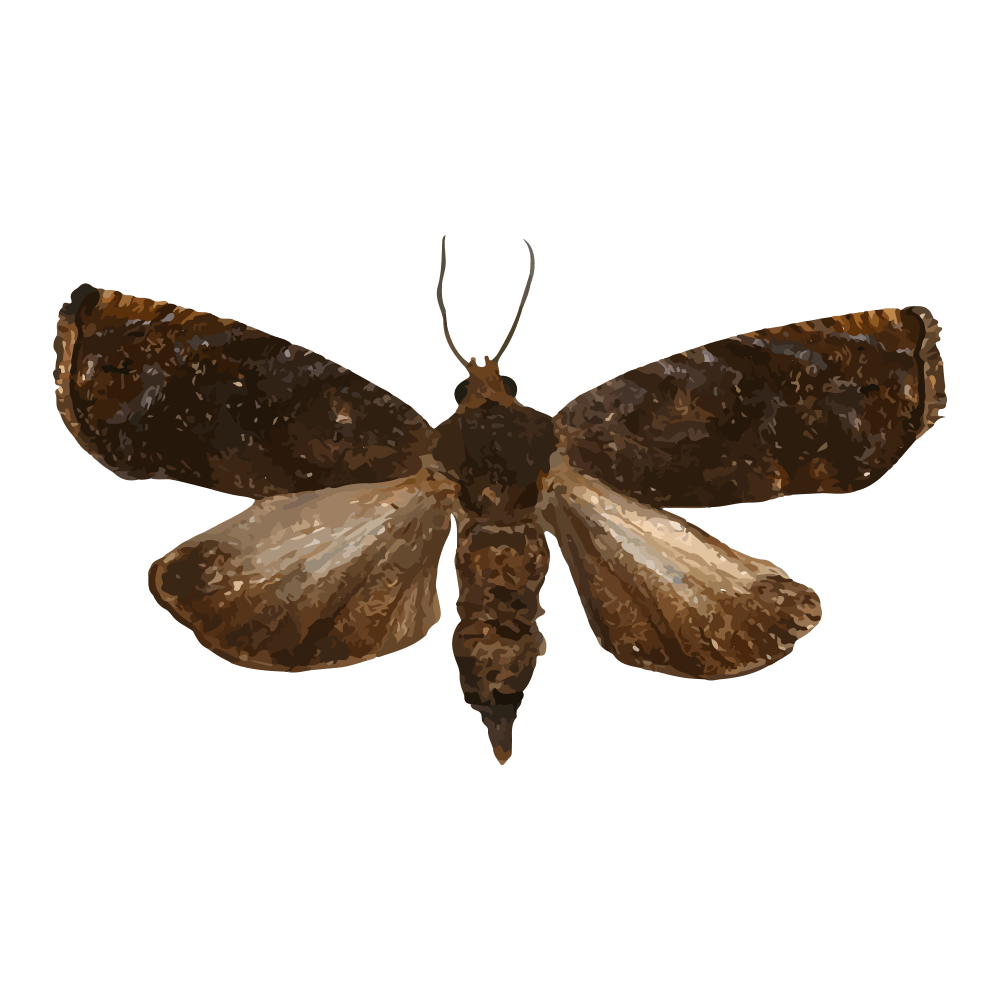


| Latin Name | Cydia trasias |
| Common Name | Walnut Fruit Moth |
| Biology | This pest has 1-2 annual generations. Mature larvae overwinter in cocoons within bark crevices, fallen fruits, or soil. Overwintering adults emerge late April to early May. Eggs are singly laid on young walnut fruits. Hatched larvae bore directly into fruits, feeding on kernels; infested fruits often drop or ripen prematurely. Mature larvae pupate July-August, then emerge to reproduce, with partial second generations. Adults are nocturnal, phototactic (attracted to blacklight), and prefer fresh young fruits for egg-laying. Larvae rarely transfer post-boring, though fallen fruits may disperse larvae. |
| Damage | This pest primarily damages walnuts. |
| Distribution Regions | East Asian Fruit Zone |
| Monitoring | Pheromone lures mimic natural sex pheromones to attract male insects into specialized traps for population monitoring and suppression. As a core IPM component, monitoring enables early risk detection and targeted control. Mass trapping reduces mating opportunities to curb offspring populations. Protocols: ●Use only with matched traps. ●15-45 traps/hectare,replace/replenish every 4-6 weeks. ●Wear gloves or wash hands with detergent when switching lure types. ●Refer to trap-specific hanging instructions. |
| Recommended Traps | Delta Trap, Wing Trap |

分享您的联系信息,即可获得精准匹配的信息素解决方案。如果我们现有的产品组合缺乏最佳匹配,我们的合成化学团队将启动定制开发——从分子结构设计到规模化生产。